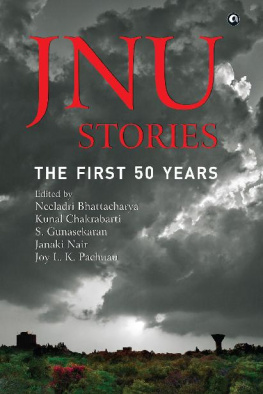T. Ramamurthy and S.K. Bhattacharya (eds.) Infectious Disease Epidemiological and Molecular Aspects on Cholera 10.1007/978-1-60327-265-0_1 Springer Science+Business Media, LLC 2011
1. General Introduction
Abstract
Cholera is an ancient disease but continues to strike human lives in mass. Based on the published reports between 1995 and 2005, it is evident that cholera is rampant in sub-Saharan Africa (66%) than Southeast Asia (17%). Since its discovery in 1854, Vibrio cholerae , the causative organism of cholera, has changed its biotypes, serogroups, and strain characteristics. Thus, this organism is strongly positioned to augment problems in many aspects including epidemiology and biological complexity. Chapters 2, 3, 4, and 5 in this book describe about the cholera scenario, respectively in Asia, Africa, Commonwealth of Independent States (the then Russia), and Americas along with characteristics of V. cholerae strains that influenced the local epidemics.
Cholera is an ancient disease but continues to strike human lives in mass. Based on the published reports between 1995 and 2005, it is evident that cholera is rampant in sub-Saharan Africa (66%) than Southeast Asia (17%). Since its discovery in 1854, Vibrio cholerae , the causative organism of cholera, has changed its biotypes, serogroups, and strain characteristics. Thus, this organism is strongly positioned to augment problems in many aspects including epidemiology and biological complexity. in this book describe about the cholera scenario, respectively in Asia, Africa, Commonwealth of Independent States (the then Russia), and Americas along with characteristics of V. cholerae strains that influenced the local epidemics.
The pathogenesis of V. cholerae is very complicated that involves number of virulence genes. In many studies it has been shown that attenuation of the major virulence-associated genes encoding cholera toxin ( ctx ) and hemolysin ( hlyA ) still causes diarrhea in animal models..
In V. cholerae , more than 200 serogroups have been identified and of these, only O1 and O139 are known to cause epidemics/pandemic cholera. Diversity in the somatic (O) antigen is due to the composition of monosaccharide components and biosynthesis mechanisms. Information on the genetic basis of O -polysaccharide (OPS)/capsule structures is developing steadily. Sequencing of specific genomic regions allowed examining genetic diversity in many V. cholerae strains..
Though information on genetics and immunological aspects on V. cholerae has increased considerably, our knowledge on the stress-adaptive mechanisms with special reference to its survival is still fragmentary. Various intra- and extracellular small signaling molecules play critical roles in overcoming environmental onslaughts and allowing the pathogen to survive, multiply, and cause the disease. V. cholerae has two most important small molecules-mediated signaling pathways, which are extracellular quorum-sensing and intracellular 3',5'-cyclic diguanylic acid (c-di-GMP) signaling systems. The intracellular (p)ppGpp molecule, called alarmone, also helps the pathogen to survive under nutritional scarcity and other stresses. In addition, universal second messenger cAMP and its receptor protein (CRP) have been implicated in virulence gene expression in V. cholerae . describes fascinating aspects on signaling systems of V. cholerae during post-genome sequencing era.
Flagellar-mediated motility has been established to contribute to the pathogenesis in a number of bacteria. Information on non-motile mutants of V. cholerae including less fluid accumulation in the rabbit ileal loop, defects in adhesion on rabbit brush border cells, and less reactogenic in human volunteers emphasize the important role of flagellum in the pathogenesis. elaborately describes about the epidemiology, virulence mechanisms, and ecology of non-O1, non-O139 serogroups of V. cholerae along with other fascinating aspects on strain diversity, putative toxigenic factors, and evolutionary perspectives.
The proteases produced by pathogenic vibrios are long recognized to play pathogenic roles in the infection. Hemagglutinin/protease (HA/P) produced by V. cholerae is thought to play indirect pathogenic roles, which is regulated together with major pathogenic factors such as cholera toxin (CT) or toxin-co-regulated pilus (TCP) by a quorum-sensing system. Most importantly, HA/P is necessary for full expression of pathogenicity of the vibrios by supporting growth and translocation in the digestive tract. In addition to the HA/P, existence of another Zn-metalloprotease PrtV and cysteine protease domain in RTX toxin was also demonstrated. presents a summation of the recent studies on VCC that shed light on how this toxin transforms into an integral membrane protein as well as its affinity for specific protein and lipid components of the target membrane.
Till date, the oral rehydration therapy (ORT) is the main stay for the treatment of cholera patients. However, administration of antimicrobials is an adjunct to ORT as it shortens and reduces the volume and duration of diarrhea. Due to excessive use of life-saving drugs, many groups of infectious bacteria became resistance rendering these drugs ineffective. There are several mechanisms by which the bacteria become resistance to the antimicrobials and possession or acquirement of integrons is one of the well-established genetic factors for the resistance. Integrons are gene capture and expression systems by which bacteria can acquire genes for the resistance. Integrons carrying several resistance gene cassettes have been indentified in vibrios and these genes and their arrangements seem to be specific in certain regions. describes about the types of integrons in V. cholerae , mechanisms by which the organism uptake the resistance genes, and their general distribution in different geographical locations.
Unlike the other enteric pathogens, V. cholerae survive and proliferate in the natural water bodies supported by tiny crustacean fauna known as zooplankton. The recent concept of cholera has included environmental aspects, as the disease is strongly associated with the change in the global climatic patterns as evidenced by El Nio events. The description of viable but non-culturable (VBNC) form in the environment and the effect of physico-chemical and biological factors on toxin gene regulation provide valuable clues to the ecology of V. cholerae . describes updated management components of cholera.
To trounce the troubles mentioned in several of the chapters, the disease as well as the causative organism should be tackled with holistic strategies using field-generated data through several epidemiological investigations, informational science, and new technologies for prediction by means of computational and mathematical tools. New directions are available to overcome the emerging and reemerging infectious diseases with the strategic application of many tools and technology. Epidemiology and molecular aspects are emerging segments in the modern medicine and biology. Systems biology began to emerge with the completion of the V. cholerae genome projects and the resulting complete list of genes, RNAs, and proteinsthus enabling global or comprehensive measurements of the molecules in response to biological perturbations. Effective analysis and integration of this information leads to predictive models on functional aspects of V. cholerae . Many of the concepts about the disease as well as the evolution of virulence in V. cholerae have slowly been changed due to the advancement in technologies. The outcome of these developments will be fascinating in next 1020 years and may help in making resolutions for global reduction and ultimately elimination of cholera.

![Bhattacharya S K. Epidemiological and Molecular Aspects on Cholera [recurso electrónico]](/uploads/posts/book/205862/thumbs/bhattacharya-s-k-epidemiological-and-molecular.jpg)


![Lee - Python Programming Fundamentals [recurso electrónico]](/uploads/posts/book/214321/thumbs/lee-python-programming-fundamentals-recurso.jpg)
![Hartman-Stein Paula E. - Enhancing Cognitive Fitness in Adults [recurso electrónico]: A Guide to the Use and Development of Community-Based Programs](/uploads/posts/book/212245/thumbs/hartman-stein-paula-e-enhancing-cognitive.jpg)



![Dębicki Krzysztof - Queues and Lévy Fluctuation Theory [recurso electrónico] $c](/uploads/posts/book/193156/thumbs/d-bicki-krzysztof-queues-and-l-vy-fluctuation.jpg)
![Eisner Tanja - Operator Theoretic Aspects of Ergodic Theory [recurso electrónico] $c](/uploads/posts/book/173124/thumbs/eisner-tanja-operator-theoretic-aspects-of.jpg)
![Russell - On education [recurso electrónico]](/uploads/posts/book/137691/thumbs/russell-on-education-recurso-electro-nico.jpg)
![Gilles Dowek - Introduction to the Theory of Programming Languages [recurso electrónico]](/uploads/posts/book/137340/thumbs/gilles-dowek-introduction-to-the-theory-of.jpg)